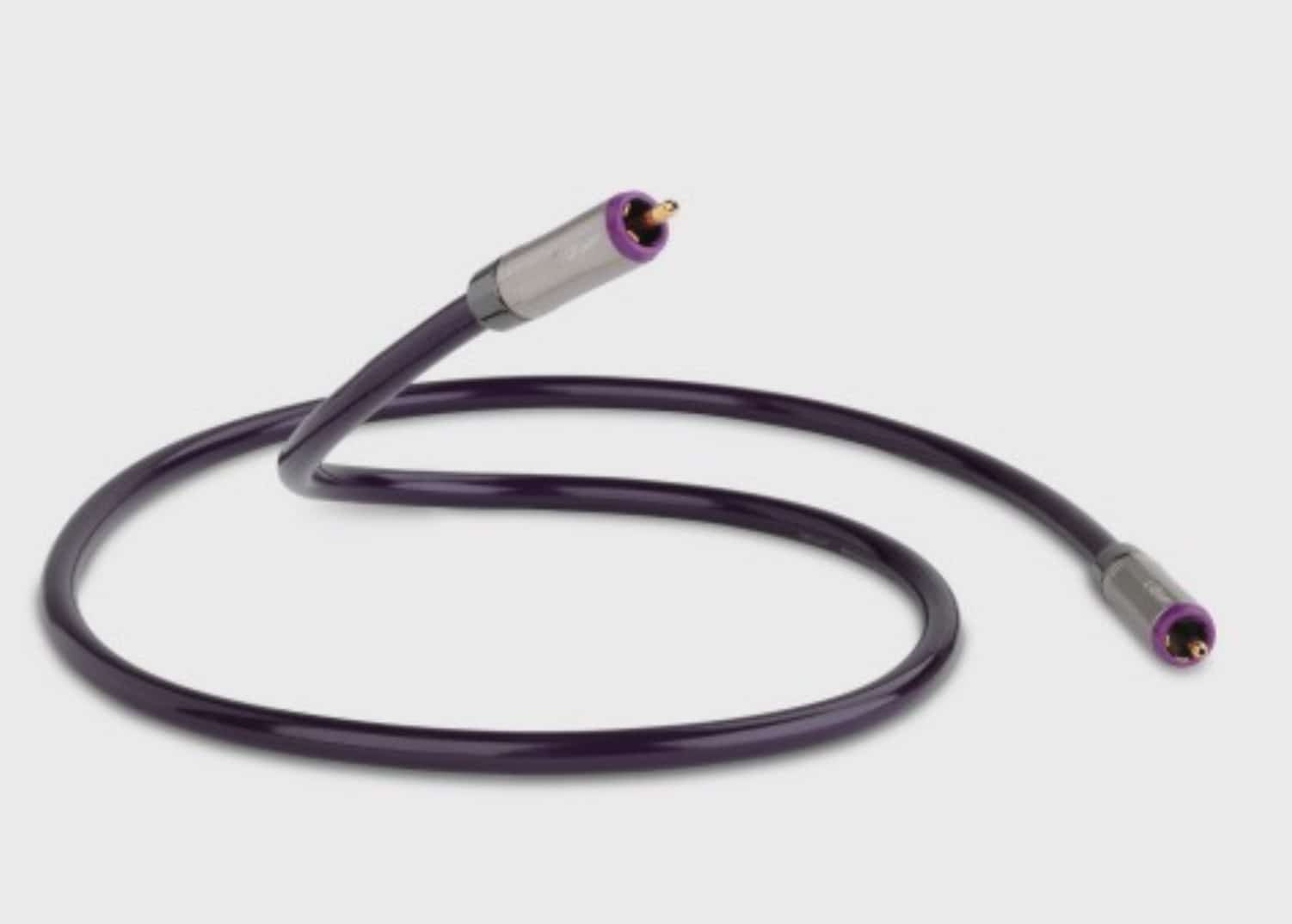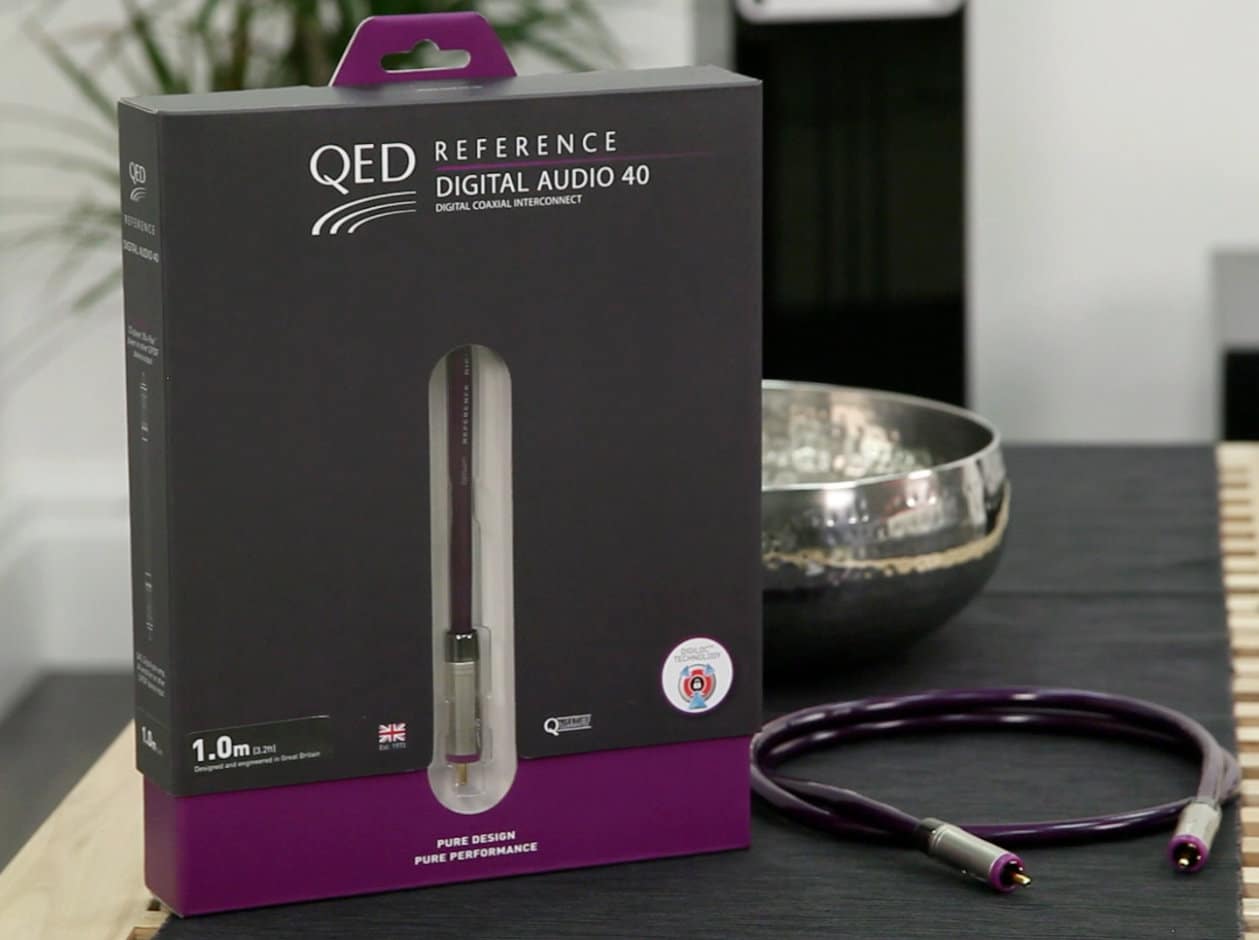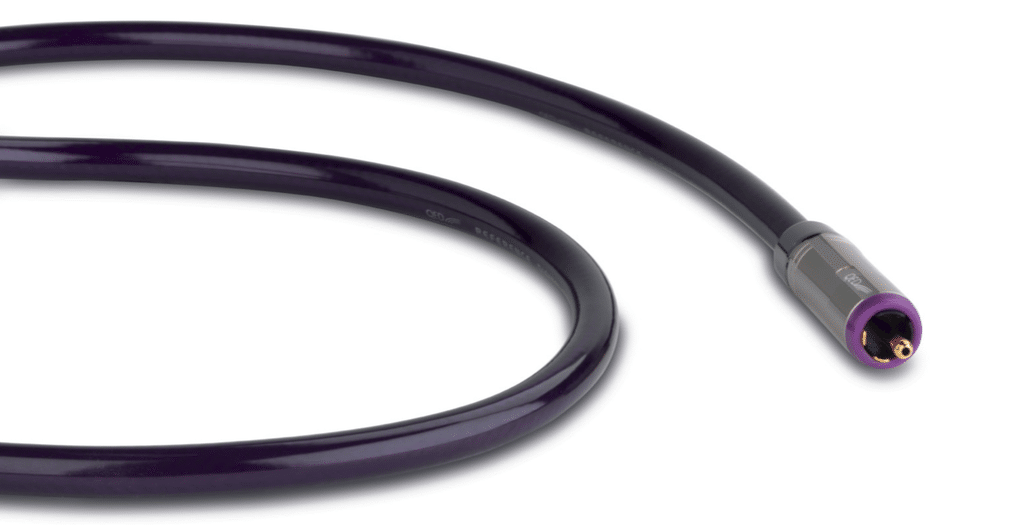The Article
QED Reference Digital Audio 40: The Transport bone connected to the…DAC bone, the DAC bone connected to the…amp bone
29th November 2016

Offering a specialist digital cable at a relatively low price, Paul Rigby reviews the QED Reference Digital Audio 40
Why would you bother? To have a digital cable, that is? What is the point of it? Two reasons, actually but, at this price point, a good quality digital cable can serve as an ideal tool to help upgrade your CD player (the other reason is to connect a very expensive DAC with a separately bought, specialist and very expensive transport, probably belt driven too).
If your current CD player is getting a little grey around the gills but is basically sound in mechanical terms and provides a decent transport (the bit that holds the CD tray, in essence) and, around the back, the chassis offers a coaxial/SPDIF port, then a digital cable can provide a value for money upgrade option. How? Buy yourself a top quality DAC to replace the one that sits in your ageing CD player. All you need to do is run the digital cable from the old CD player to the new, external, DAC. The CD player then ignores its own internal DAC and looks towards the new DAC instead. You then connect that new DAC to your amplifier and you, in effect, have got yourself a brand new and mightily improved CD player for (hopefully) not that much, at least in relative terms.
Now, you want to get a good quality DAC to make the effort a worthy one. Otherwise, why do it, eh? The thing is, when you connect the older CD player with that new DAC, you want a cable that doesn’t impose any sonic flavour upon the sound. You want a cable that is, in many respects, as transparent as possible. You really don’t want to be be sitting there, listening to that happy hardcore techno remix of John Denver’s Annie’s Song and musing if the sonic signature of your hi-fi is down solely to the transport/DAC or is the cable adding a bit too?
What I’m looking for from this QED cable is the ability to let as much music through as possible, therefore, without adding any distortive noise to the picture. In effect, that is the basis of a good cable: what it doesn’t do. That it shifts a music signal from A-B is a given. I just don’t want any negative stuff added too.
This silver-plated 99.999% Oxygen Free Copper central conductor cable is wrapped with a dual layer, closely woven 99.999% OFC shield braid and aluminium mylar wrap. The cable is terminated with 75 Ohm-matched Digiloc RCA plugs. So how does it sound?
SOUND QUALITY
I began the sound test with Dexter Gordon’s Three Little Words that had Gordon’s sax on the right channel with the bass, piano and drums on the left. The combination presented lots of sound testing possibilities in terms of separation and noise contamination measurements.
Listening to the QED, even after the first few seconds, I could hear a distinct sonic behaviour and one that pleased me no end. I don’t know how many digital cables I have heard in this price range and anywhere up to around £300 in which digital cables often add a sense of, not exactly brightness, but a definite spotlight verging on stridency in the upper midrange. This gives an edge, a slight clinical flavour to brass, vocal crescendos and the like. I could have heard the same from Gordon’s sax but never did and, oh, the relief. What I did get from the QED was a tonal balance and, unusually for this price point, a tonal balance that provided a firm, secure and weighty bass response. Gordon’s sax not only offered a sense of play and a sprightly nature but it was firmly rooted in a bass power that always lay underneath. You never lost the feeling that this instrument was being powered by a strong and powerful individual. The sax sounded meaty.
As you might expect then bass not only sounded free and easy but also accompanied the sax with its own sense of power and heft and grounded the music with a solid foundation. The varied percussion also benefitted, being both free and open in the treble-infused cymbal taps and crashes but also the midrange was able to keep up and successfully track the complexities of the percussive skill on offer here. The piano wasn’t left alone, either. It showed a sense of focus and precision that helped this potentially chaotic – in sonic terms – instrument to retain a tight suite of rhythmic patterns that was a pleasure to the ear.
So much for the lightness of touch from jazz. How about a more dynamic track? I played David Gray’s Babylon and was delighted by the midrange insight that produced a welcome textural quality within the Gray vocal delivery, allowing his voice to reveal, quite successfully, the imperfections within. That slightly grated, worn, yet wholly emotive aspect of his voice. This vocal performance contrasted nicely with a rich introductory acoustic guitar that was both warming and tonally complex. I was also happy to hear that the newly enhanced bass emphasis fit easily into the overall arrangement without the bass itself blooming and invading the space of the midrange. The bass kept itself to itself and allowed any fragile and delicate midrange filigree to remain intact.
During Depeche Mode’s Enjoy The Silence, I was also happy with the bass performance on this dynamic track. Despite the comparatively low price and restrictions on build and materials that such a low cable budget provides, the lower frequencies offered a pleasingly analogue-like warmth. This was a powerful bass without any nasty edges or false, clinical spotlights. The bass sounded almost organic in its presentation.
CONCLUSION
Providing top notch value for money, this digital cable is the perfect excuse to hook up your CD’s transport with a new DAC. With this cable, you can be sure that you will be maximising the DAC’s potential without imposing the sonic signature of the cable upon it. The balanced nature of the cable allows the music itself to dominate instead.
QED Reference Digital Audio 40
Price: £89.95 for 1m
Website: www.qed.co.uk
Tel: 01279 501111
GOOD: tonal balance, price, organic bass, midrange clarity
BAD: nothing
RATING: 8
REFERENCE
Leema Elements CD Player
Benchmark DAC2 HGC
Rega Brio-R amplifier
Spendor S3/5R speakers
Audiomica Vandini Gold 75 Ohm digital cable






Hi Paul. Which is the better digital cable?
The Chord Clearway Digital or this QED Ref Digital Audio 40?
Both! Either will give you good service and excellent sound quality. The differences will be personal. If you can demo both, please do but either will do the job very well.
I think will have to let my budget decides then.
Thanks, Paul.
Hi Paul I like jazz especially old jazz from the 50 swing is my favorite and vocal jazz like some modern stuff also ,I like folk music,a bit of African . I like when bass is light and well controlled,highs m’usent sound harsh or digital,and I love minds especially when I listen to Diana Washington.
Now all that said I have a naim sound system and dynaudio speakers in a 100 to 250 dollars rang what digital coaxial cable would you suggest. I can not listen to the chord clear way or the QED performance
Thanks for your note, Tommy. The QED is a good all-rounder in terms of musical genres but will provide a balanced musical output so you won’t hear any bass emphasis, for example while mids are pretty neutral.
What to you think of atlas hyper DD
Hi Tommy – these? https://theaudiophileman.com/atlas-analogue/
Yes, Atlas are generally excellent. Haven’t reviewed a bad cable from Atlas.
Hi Paul I borrowed THE CABLE in this review QED REFERENCE DIGITAL 40 , before receiving the cable I had it’s little brother QED
PERFORMANCE DIGITAL.
Here’s my personal review , first let’s take about QED PERFORMANCE i understand why it won hifi awards , it is a very good quality price cable ,but it’s a bit accentuated on mid’s and highs it can get irritating and bass needs a bit more focus and slam.
Now what has changes with the QED REFERENCE 40 ? First this cable is very neutral,no over emphasized mid or high,base is much more powerful and clean .
But there are certain points I don’t like first this cable gives the impression that there’s a filter screen in front of the music I would prefer a cable that gave a better sense of instruments being in the room and have more focus.
Also to get this cable to express all its good points I have to drive my amp much harder , and there things start to get interesting what’s nice even if the music it driven harder it stays nice and smooth nothing irritates your ears .
Little precision with old jazz there’s a little sense of dull when volume is low but once up it’s very goood,with modern music this cable is fantastic much less irritating also you don’t have the impression that the artist is singing in your face like the other cable,stereo image is more focus better distinction between instruments.
But my final overall impression is QED PERFORMANCE IS A FUN QUALITY PRICE CABLE
QED REFERENCE 40 IS A NEUTRAL CABLE THAT NEEDS POWER AND COULD BE BETTER SINCE ITS DOUBLE PRICE
I would highly recommend this cable to anyone who hase a system that’s more on the brite side it would be a very good match
I will be trying soon ATLAS HYPER DD
Great stuff Tommy – thanks for taking the time to write this. Very nice of you.
I understand the Chord Clearway / QED Reference 40 digital cables are on par. How about comparing QED’s to Chord Shawline Digital cable? Would it definitely pick Shawline over Reference 40? Thanks.
Hi Sebastian – the Shawlines cost around twice as much as the QEDs and you can hear the investment in the Chords. I’d head for the Shawlines.